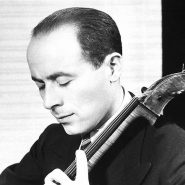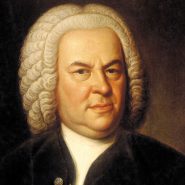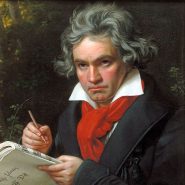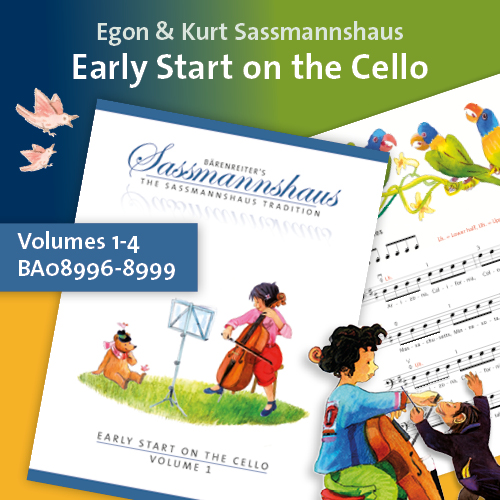Tag: phrasing
By Anssi Karttunen March 9, 2019
Subjects Repertoire
Tags architecture, Brahms, color, flexibility, form, freedom, gesture, phrasing, precision
By Brinton Smith May 18, 2018
By Robert Battey December 15, 2013
Subjects Practicing
Tags accents, alignment, Awareness, Bach, Bach Cello Suites, bar lines, Battey, Beethoven’s “Archduke” Trio, Brahms Double Concerto, Capucon, cello, cellobello, communication, complexity, conservatory, counting, dissonance, Feuermann, focused listening, great artists, great composers, intelligent artist, interpreter, interpretive decisions, intonation, melody, metrical organization, musical critic, musical phrasing, performer, phrase lengths, phrasing, powerful, recordings, resolution, robert, Rostropovich, score-study, slurs, studying, stunning effect, stylistic conventions, text, vibrato, Washington Post, Yo-Yo Ma, youtube
By Aron Zelkowicz November 12, 2013
Subjects Interviews, Repertoire
Tags Aron, audience, Benjamin Britten, Britten, Britten Cello Suites, cello, cello suites, cellobello, complete suites, discoveries, discovery, editorial markings, fingerings, inflection, interview with Steven Doane, movements, performance, perspective, phrasing, recital, recitals, recordings, Sound, Steven Doane, Suites, Zelkowicz
By Arnold Steinhardt September 10, 2013
Subjects Artists, Repertoire
Tags accompany, arpeggios, artistry, assistant concertmaster, beauty, Beethoven, Boston, Boston Symphony Orchestra, bow, bow control, Camille Saint-Saëns, Carnival of the Animals, cello, cellobello, changes, child, CIM, Cleveland Institute of Music, Cleveland Orchestra, connections, creativity, depth, difference, discussion, double major, essence, exceptions, extended melodies, fiddlers, Hess, ideas, improvement, intimate, intonation, Jules Eskin, Mary, melody, music, musical essence, musicality, musicianship, permier music school, phrase, phrasing, phrasing alterations, piano, re-evaluate, respect, rocking, scientists, sections of music, singing, string quartets, swaying, The Swan, tone production, vibrato, violin master-class, work
By Selma Gokcen March 11, 2013
Subjects Playing Healthy
Tags aiming for a goal, Alexander Technique, automatic, balancing the instrument, bow, breath flowing, cello, cello technique, cellobello, conceptions, evaluate, Experience, exploring our habits, framework for self-study, freedom, fundamental knowledge, Gokcen, inner composer, lasting value of Alexander Technique, left hand, movement, muscular tension, music, musical expression, nervous system, phrasing, physical pleasure of playing, place of silence, Preconceived ideas, pressure in the sound, psycho-physical, re-training of musicians, reactions, refining sensation and awareness, self-study, Selma, Six Part Series, subconscious patterns of learning, tension, thinking, Thinking in a new way, working with music
By Robert Battey January 16, 2013
Subjects Repertoire
Tags accuracy, ambiguity, Anna Magdalena, Anner Bylsma, artistic, autograph, Bach, Bach Cello Suites, Bach Suites, Bach's original intentions, Bach’s precise intentions, Barenreiter, Battey, careless, cello, cellobello, challenges, colors, complexities, conclusions, curiosity, dilemma, Editions, editors, enjoyment, experimentation, flawed, genius, historical, inconsistent copies, instrument control, Instruments, interpretive creativity, interpretive ideas, Janos Starker, judgment, liberation, lute, lute arrangement, meaningful interpretations, monochromatic, normal teaching model, Pablo Casals, painting, parameters, paris, personal research, personality, phrasing, Pierre Fournier, printing, publications, rainbows, recordings, repertoire, response, Rhythm, robert, sloppy, slurs, study, Teaching, text booklet, textual, The Fencing Master, transcribing, uncertainties, virtuosity
By Jonathan Pegis January 9, 2013
Subjects Orchestra, Repertoire
Tags audition excerpt, Auditions, Beethoven, Beethoven Symphonies, Beethoven's 5th Symphony, bow control, bowings, breathing, cello, cello excerpt, cellobello, control, effortless, experiment, experimentation, fingerings, intonation, Jonathan, Northwestern, pacing, Pegis, phrasing, slow breathing, string crossings, Symphony, tempo, variations, variations on a theme, vibrato
By Jonathan Pegis December 11, 2012
Subjects Orchestra, Repertoire
Tags attention to detail, Beethoven, Beethoven Symphonies, Beethoven's 5th Symphony, bow control, bow technique, cello, cello excerpt, cellobello, continuous vibrato, details, dynamics, Excerpts, intonation, Jonathan, legato, melody, musicality, Pegis, phrasing, practice tips, Preparation, Rhythm, shifting, singing, Sound, sound production, technical challenges, tempo, vibrato
By Jonathan Pegis October 19, 2012
Subjects Orchestra, Repertoire
Tags accents, Audition, Beethoven, blog, bow changes, bow speed, cello, cellobello, coaching, confidence, control, dynamics, education, Excerpts, inflection, legato, markings, mistakes, nerves, orchestra, orchestral excerpts, phrasing, practicing, Preparation, pressure, recording, release, Rhythm, singing, sustain, Symphony, teacher, Teaching, technical challenges, variations, vibrato
By Aliza Stewart May 18, 2012
By Natasha Brofsky March 16, 2011
Subjects Practicing
Tags art, bowings, Brofsky, cello, context, emotion, experiment, fingerings, imagination, inspiration, motion, movements, musical, musical imagination, musicians, Natasha, performance, phrasing, Practice, productive, success, tempo












